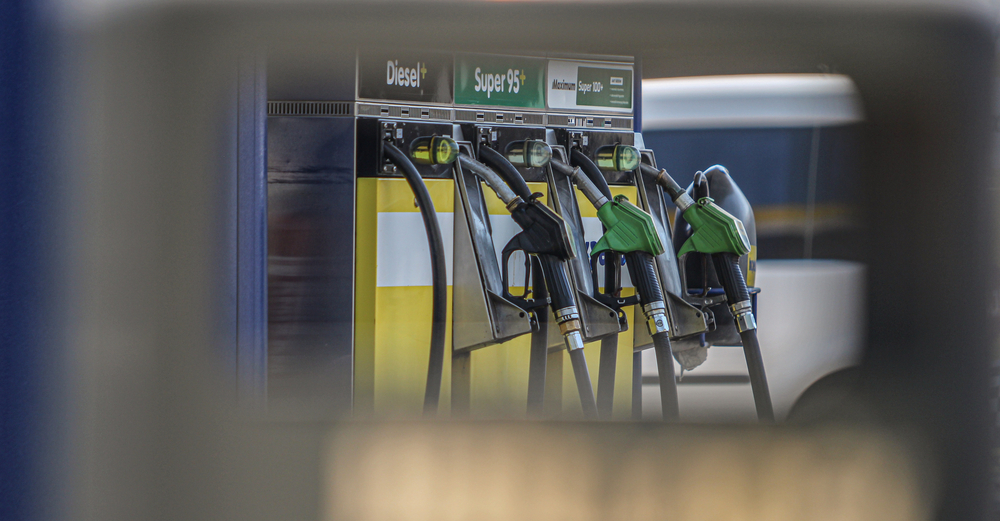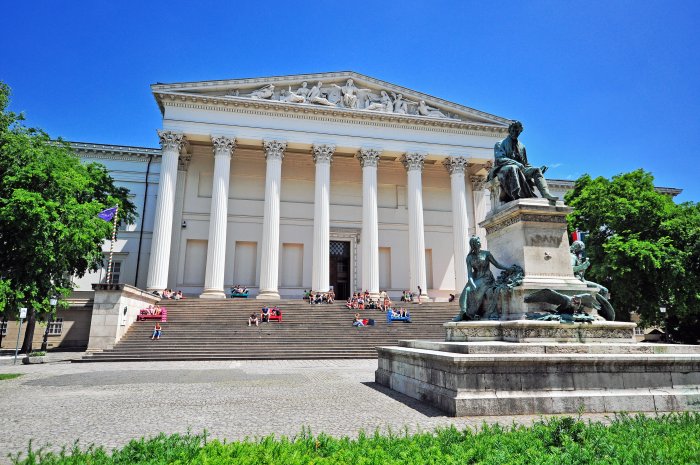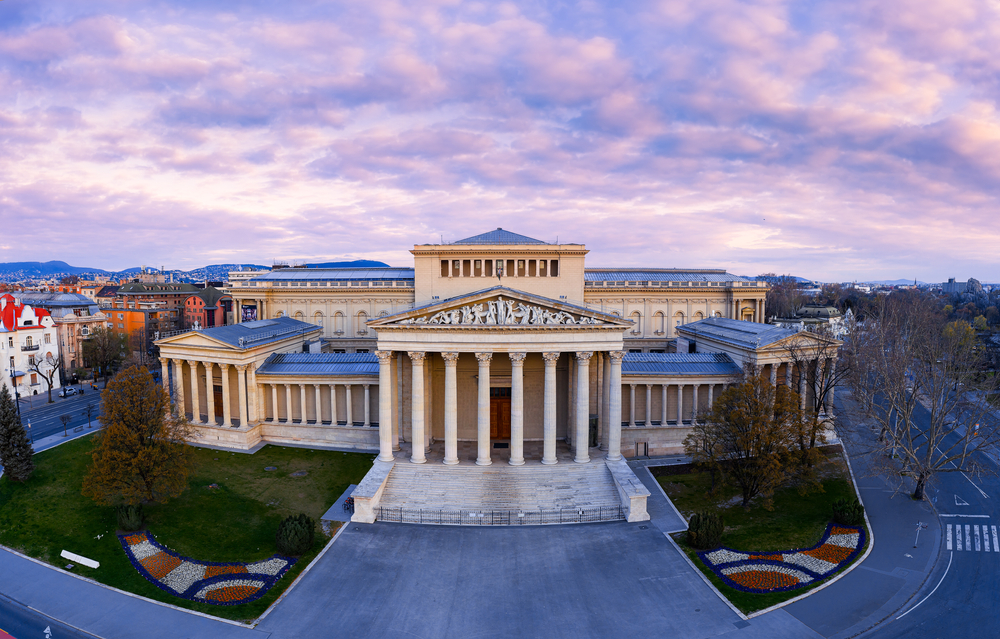Celebrating a Dynasty With a Once Banned, now Widely Recognized Name

Historian Róbert Török.
Photo by újkor.hu.
The Dreher Museum in Kőbánya documents both the history of beer and Hungary’s most famous brewing family.
Dreher must be a brand with one of the best recognition rates in Hungary despite being a proscribed name for almost four decades in the Communist era.
“They didn’t want to use the name [although] it came back in 1987, even before the end of the communist period,” Róbert Török, museologist and historical researcher, told the Budapest Business Journal on a recent press tour of the Dreher Museum.
It is little wonder the Marxist-Leninist ideologues of the late 1940s wanted to erase the name of Dreher from history. Before World War II, this Austro-Hungarian dynasty of four generations had consolidated the Hungarian brewing sector to claim 70% of the beer market, marking them as detested arch-capitalists.
But for the authorities of that time, it got worse. The Drehers believed in making life for their workforce as decent as economic circumstances allowed, for example, by providing affordable housing.
“Good” capitalists were inexplicable and diametrically opposed to the holy writ of the day, Karl Marx’s Das Kapital. The name was, therefore, buried, hopefully to be forgotten. Indeed, part of that burial process is still with us.
“Kőbányai [beer] is the communist Dreher,” Török said, citing the 4.3% alcohol, award-winning beer named after the suburb of Budapest that hosts the brewery. (Ironically, despite being a political concoction designed to replace the classical Dreher lager, Kőbányai remains a big brand and holds an important place among today’s Dreher offerings.)
This is not to imply the museum is all about politics; it is just one aspect of a history that illustrates the impacts of technical, scientific, social and economic advances on the brewing industry in Hungary in general, along with the roles played by the various Dreher family owner-directors in particular.
Long ‘Revolution’
Indeed, Hungarian brewing began well before the mid-19th century, when the Austrian family came on the scene, as Török was quick to point out to one beer blogger who had brought up what he termed the recent “craft beer revolution.”
“You had a question about the ‘craft revolution,’ but in the 18th century, every Hungarian village and town had a craft beer brewery, so this is not a revolution now,” Török gently admonished the blogger.
As in much of the world, this decentralized industry resulted from existential needs: populations relied on beer (and wine) as a safe source of fluid intake, given the scarcity of reliable, potable water in many locations.
However, as Török noted, by the 18th century, some consolidation had already occurred from the Middle Ages, when hops were introduced to Hungary. Adding the female flower of the hop greatly enhanced the flavor, while extending the shelf life of unpasteurized beer from two to eight days, a significant enhancement to a brewery’s commercial viability.
Fast forward to the mid-19th century, and Hungarian brewers first began to migrate to Kőbánya, a suburb generally thought of as being eight kilometers east of central Budapest (in fact, it is the geographical center of the Hungarian capital).
The attraction was the cool, stable temperatures needed for fermenting and storing beer, available in the vast cavern system created by centuries of quarrying the stone needed to construct the capital’s buildings. (The word Kőbánya means stone mine.)
Visiting Budapest, Antal Dreher Sr., who had learned his trade in England and had inherited the family brewery in Klein-Schwechat, near Vienna, knew a business opportunity when he saw one.
Impressed by the quality of the Kőbánya beers and already exporting to Hungary, it made sense to establish a second brewery in Budapest. Dreher bought the heavily indebted Kőbánya Beerhouse in 1862. Sadly, Dreher senior died before he could fully develop his enterprise, and his son, Antal Dreher Jr., took over his inheritance in 1870, at the end of his studies.
At the helm of the family company for half a century, it was under his leadership that the Kőbánya brewery expanded dramatically, exploiting technical innovations and making full use of the political stability that prevailed after the 1867 Ausgleich (Compromise) with Vienna and the resulting economic growth across the Dual-Monarchy.
For example, Dreher sold beer in bottles in 1870, a first in Hungary, although, as Török admits, glass was an “unsustainable luxury in that period.” Hence, for some decades, most produce continued to leave the brewery in wooden barrels produced by the company’s own coopers.
Beer City
Dreher was far from alone, and the Kőbánya caverns became a kind of “beer city,” hosting five fast-expanding breweries in the latter part of the 19th century.
Across the Hungarian kingdom, competition was intense, with some 90 breweries vying to slake the thirst of its 21 million citizens. Nonetheless, the output of the five “giants” of Kőbánya supplied 90% of domestic demand, with production peaking at 2.1 million hectoliters as the country plunged into war in 1914.
Inevitably, World War I and the consequent break-up of Austria-Hungary and accompanying economic woes changed everything. Combined production from the same five Kőbánya breweries shrank to just 300,000 hectoliters in 1923, a mere 14% of the pre-war total.
In a clearly unsustainable situation, Jenő Dreher (the middle son of Antal Dreher Jr.), who had taken over the day-to-day running of the Hungarian brewery, created a stand-alone company, shedding links to the Dreher breweries in Klein Schwechat, Trieste and Měcholupy (Czechoslovakia), and later overseeing the surviving “giants” of Kőbánya merged into one company.
He also greatly diversified production, expanding the malting facilities and creating chocolate and biscuit plants before expanding into hotels and restaurants to maintain employment and survive as a commercial concern.
The brewery enjoyed a brief upswing in fortunes after 1938 (and Hungary’s acquisition of former territories in Slovakia and Transylvania) before the sorry cycle of all-out war and devastation began once again, all followed by the nationalization of breweries under the communist government in 1948.
Despite the vagaries of a state-managed economy, the Kőbánya brewery saw significant investment in the ensuing 40 years and marketing innovations (such as the re-emergence of the Dreher brand) before the system change in 1990.
With the Hungarian state short of cash and privatization in vogue, South African Breweries purchased the brewery in 1993 and initiated further investment in equipment and buildings.
Today, after the numerous traumatic vicissitudes of the past 170 years, Dreher is part of the Asahi Group of Japan, with annual sales of some 2.3 million hectoliters, meaning it holds approximately one-third of the domestic market.
This article cites information provided by historian Róbert Török, the museum and the booklet “From Dreher to Dreher,” published in 2019 by the brewery. Visits (including some with English-speaking guides) to the Dreher Beer Museum and brew house are advertised on the company website. Price: HUF 3,000 per adult, HUF 1,800 for pensioners and students. Minimum age required: 18 years. The website is in Hungarian only, except for this page. Many exhibits in the museum have dual-language titles, but most of the explanatory texts are only in Hungarian. dreherzrt.hu/sorutazas/jelentkezes-sorturara/
This article was first published in the Budapest Business Journal print issue of October 6, 2023.
SUPPORT THE BUDAPEST BUSINESS JOURNAL
Producing journalism that is worthy of the name is a costly business. For 27 years, the publishers, editors and reporters of the Budapest Business Journal have striven to bring you business news that works, information that you can trust, that is factual, accurate and presented without fear or favor.
Newspaper organizations across the globe have struggled to find a business model that allows them to continue to excel, without compromising their ability to perform. Most recently, some have experimented with the idea of involving their most important stakeholders, their readers.
We would like to offer that same opportunity to our readers. We would like to invite you to help us deliver the quality business journalism you require. Hit our Support the BBJ button and you can choose the how much and how often you send us your contributions.











